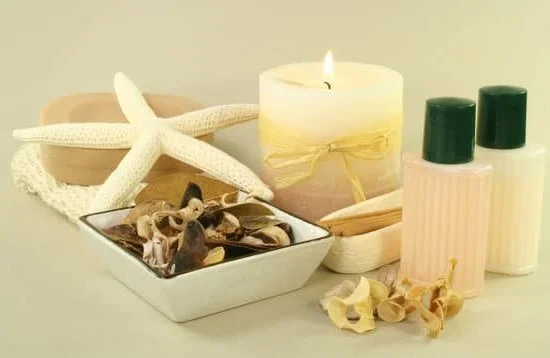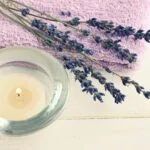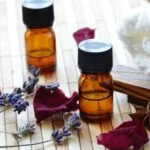Are you looking for a natural way to soothe muscle pain, relieve stress, and promote relaxation? Aromatherapy heating pads may be the perfect solution for you.
Combining the benefits of aromatherapy and heat therapy, these DIY heating pads infused with essential oils can provide a holistic approach to self-care. In this article, we will explore the science behind aromatherapy and heat therapy, discuss the best materials for DIY heating pads, explore the most effective essential oils for different purposes, provide step-by-step instructions on making your own aromatherapy heating pad, address important safety considerations, and share creative ways to personalize your DIY heating pad.
The combination of aromatherapy and heat therapy has been known to offer various health benefits. The use of essential oils in conjunction with heat can aid in pain relief, stress reduction, and relaxation. Understanding how these two elements work together can help you maximize their benefits for your overall well-being.
When it comes to creating your own aromatherapy heating pad, choosing the right fabrics and fillings is crucial. Not only do certain materials provide better insulation for retaining heat, but they also allow for the optimal diffusion of essential oils. By carefully selecting the materials for your DIY heating pad, you can enhance its effectiveness and durability.
The Science Behind Aromatherapy
Aromatherapy has been used for centuries to promote relaxation, improve mood, and relieve various ailments. When combined with heat therapy, the benefits of aromatherapy can be even more pronounced. The science behind aromatherapy heating pads lies in the way essential oils interact with our bodies when applied with heat for pain relief and relaxation.
Essential oils are highly concentrated plant extracts that have been used for their therapeutic properties. When these oils are heated and dispersed through an aromatherapy heating pad, they can have a powerful effect on the body and mind. The heat from the pad helps to vaporize the essential oils, allowing them to be inhaled and absorbed through the skin. This dual method of delivery provides a holistic approach to addressing both physical discomfort and emotional well-being.
One of the key ways in which essential oils work in conjunction with heat is through their ability to stimulate the olfactory system in the brain. When inhaled, certain essential oils can trigger chemical reactions that affect heart rate, stress levels, blood pressure, breathing, and immune function. Additionally, when applied topically through a heating pad, essential oils can penetrate deep into muscles and joints to provide localized pain relief and anti-inflammatory effects.
To create your own aromatherapy heating pads DIY at home, you’ll want to consider both the type of essential oil you use and how it interacts with heat therapy. Some popular choices for pain relief include lavender oil for its calming effects or eucalyptus oil for its cooling sensation. For relaxation purposes, chamomile or bergamot oil can help reduce stress and anxiety when combined with heat therapy.
| Aromatherapy Benefits | How It Works |
|---|---|
| Pain Relief | Vaporized essential oils provide localized pain relief when applied topically through a heating pad |
| Stress Reduction | Inhaling certain essential oils triggers chemical reactions that affect stress levels and mood |
| Relaxation | Heated essential oils help promote relaxation by interacting with the olfactory system in the brain |
Choosing the Right Fabrics and Fillings
When creating your own DIY aromatherapy heating pads, it’s important to choose the right fabrics and fillings to ensure both effectiveness and safety. The materials you select will determine the durability, heat retention, and comfort of your heating pad. Additionally, certain fabrics and fillings can enhance the benefits of aromatherapy by providing better oil absorption and retention.
Best Fabrics for DIY Heating Pads
The best fabrics for DIY heating pads are natural materials such as cotton, flannel, or linen. These fabrics are breathable, allowing the heat to penetrate through the pad while also absorbing essential oils effectively. Cotton is a popular choice for its softness and versatility, making it easy to work with when creating your own heating pad. Flannel is another excellent option due to its warmth and coziness, perfect for use during chilly nights or when seeking comfort.
Ideal Fillings for Aromatherapy Heating Pads
When it comes to fillings for DIY heating pads, natural options like rice, flaxseed, or cherry pits are commonly used. These fillings have the ability to retain heat well and provide a gentle weight that conforms to the body’s contours. Additionally, they can hold essential oils without compromising their texture or effectiveness.
Rice is a popular choice due to its affordability and accessibility, while flaxseed offers a pleasant aroma when heated. Cherry pits are known for retaining heat longer than other fillings, making them ideal for extended use.
Ultimately, choosing the right fabrics and fillings is crucial in ensuring that your DIY aromatherapy heating pad is both effective and safe for use. It’s important to consider your personal preferences as well as any existing allergies or sensitivities when selecting these materials. By incorporating high-quality fabrics and fillings into your homemade heating pad, you can enhance the overall experience of using aromatherapy for relaxation and pain relief.
Essential Oils for Aromatherapy Heating Pads
When it comes to creating your own aromatherapy heating pads, choosing the right essential oils is crucial for achieving the desired therapeutic effects. Different essential oils offer unique benefits, such as stress relief, muscle pain relief, and promoting better sleep. Here are some of the most effective essential oils to consider when making your DIY aromatherapy heating pads:
- Lavender: Known for its soothing and calming properties, lavender essential oil is a popular choice for promoting relaxation and reducing stress.
- Peppermint: With its cooling effect, peppermint essential oil can help alleviate muscle pain and tension when used in a heating pad.
- Eucalyptus: This refreshing essential oil is often used for respiratory support and can be beneficial for those suffering from congestion or allergies.
- Chamomile: Renowned for its calming and sleep-inducing properties, chamomile essential oil is ideal for creating a calming atmosphere before bedtime.
In addition to these well-known essential oils, other options such as rosemary, lemon, and cedarwood can also be beneficial for various purposes. It’s important to consider the specific needs of the individual using the heating pad and choose the appropriate essential oils accordingly.
When creating your own aromatherapy heating pad, you can experiment with different combinations of essential oils to create a custom blend that caters to your specific needs. Whether you’re looking to relieve muscle pain after a workout or simply unwind after a long day, there’s a suitable combination of essential oils that can enhance the benefits of using a DIY heating pad.
Ultimately, incorporating the right essential oils into your DIY aromatherapy heating pad will not only add delightful scents but also provide additional therapeutic benefits that contribute to overall well-being.
Step-by-Step Guide to Making Your Own Aromatherapy Heating Pad
Making your own aromatherapy heating pad can be a fun and rewarding DIY project that allows you to customize the scents and materials to suit your preferences. Whether you are looking for stress relief, muscle pain relief, or simply a way to enhance relaxation, creating a custom heating pad infused with essential oils can provide lasting benefits. Here is a step-by-step guide to making your own aromatherapy heating pad.
Gather Materials
To begin, gather the materials needed for your DIY project. You will need fabric for the outer layer of the heating pad, such as cotton or flannel, as well as an inner filling material such as rice or flax seeds. Additionally, you will need essential oils of your choice for aromatherapy purposes and thread for sewing the fabric together.
Creating the Inner Filling
Once you have gathered all the materials, start by creating the inner filling for your heating pad. Measure and cut the fabric to your desired size, leaving a small opening for filling with rice or flax seeds. Add a few drops of essential oil to the filling material to infuse it with your chosen scent before sealing the opening.
Assembling the Heating Pad
Next, carefully sew up the opening of the inner filling material to ensure no grains will escape once heated. Then, place this filled pouch inside another layer of fabric and sew around all edges to create a secure and durable heating pad. Be sure to leave one side open if you plan on microwaving your heating pad.
By following these simple steps, you can create a custom aromatherapy heating pad that provides both heat therapy and aroma-therapeutic benefits for relaxation and pain relief in an easy-to-make DIY project. With various essential oils and fabrics available, you can create multiple heating pads with different scents and designs tailored to fit specific needs in self-care routines.
Safety Tips for Aromatherapy Heating Pads
When using or making DIY aromatherapy heating pads, it is important to consider safety measures to ensure a positive and safe experience. Here are some important safety tips to keep in mind:
- Choose the right fabric: When making your own aromatherapy heating pad, it’s crucial to select a fabric that can withstand heat without posing a fire hazard. Natural fibers like cotton or linen are generally safe choices.
- Use appropriate fillings: The filling you choose for your heating pad should be able to retain heat without becoming too hot or flammable. Common fillings include rice, flaxseed, or cherry pits.
- Avoid overheating: When microwaving your DIY heating pad, be sure to follow the recommended heating time to avoid overheating and potential burns. Always test the temperature of the pad on your skin before applying it directly.
In addition to these considerations, it’s important to exercise caution when using essential oils in conjunction with heat therapy. Some essential oils can cause skin irritation or allergic reactions, so it’s essential to perform a patch test before using any new oils on your heating pad.
Remember that while DIY aromatherapy heating pads can provide soothing relief for muscle aches and stress, they should never be used as a substitute for professional medical treatment. If you have any underlying health conditions or concerns about using an aromatherapy heating pad, consult with a healthcare professional before use. By following these safety tips and guidelines, you can enjoy the benefits of aromatherapy heating pads in a safe and effective manner.
Using Aromatherapy Heating Pads for Self-Care
When it comes to self-care, incorporating DIY heating pads into your routine can be a game-changer for relaxation and pain relief. Aromatherapy heating pads are not only easy to make at home, but they also provide therapeutic benefits that can elevate your self-care experience. Whether you’re dealing with stress, muscle tension, or simply need some pampering, using aromatherapy heating pads can be a soothing addition to your routine.
One way to incorporate DIY heating pads into your self-care routine is by using them during meditation or yoga practice. The combination of heat and essential oils can enhance the relaxation and mindfulness achieved during these activities. Simply place the heating pad on your neck or lower back while you meditate or practice yoga to create a sense of calm and tranquility.
Another way to use aromatherapy heating pads for self-care is by incorporating them into your bedtime routine. Whether you struggle with insomnia or simply want to improve the quality of your sleep, a warm and soothing heating pad infused with lavender or chamomile essential oils can help promote relaxation and restfulness. Place the pad under your pillow or on your chest before bed to enjoy the calming effects of aromatherapy as you drift off to sleep.
Lastly, consider using DIY heating pads during your skincare routine as a form of self-pampering. The warmth from the pad can help open up pores and increase blood flow, allowing skincare products to better penetrate the skin. Additionally, the aroma from essential oils can add an extra touch of luxury to your beauty regimen, making it a truly indulgent experience.
| Activity | Benefit |
|---|---|
| Meditation/yoga | Enhances relaxation and mindfulness |
| Bedtime routine | Promotes relaxation and restful sleep |
| Skincare routine | Opens up pores and enhances absorption of skincare products |
Creative Ways to Personalize Aromatherapy Heating Pads
In conclusion, creating your own aromatherapy heating pads can be a wonderful way to enhance your self-care routine and experience the benefits of both aromatherapy and heat therapy. By infusing your heating pad with your favorite essential oils, you can create a personalized oasis of relaxation and comfort. The combination of soothing heat and aromatherapy can help relieve muscle pain, reduce stress, and promote restful sleep.
When choosing fabrics and fillings for your DIY heating pad, it’s important to consider their benefits in terms of heat retention and durability. By selecting high-quality materials, you can ensure that your heating pad will provide long-lasting comfort and relaxation. Additionally, choosing the right essential oils for your specific needs is crucial in maximizing the therapeutic benefits of aromatherapy heating pads DIY.
Personalizing your aromatherapy heating pad with unique designs and scents can further enhance the overall experience. By incorporating creative touches such as custom embroidery or hand-selected fabric patterns, you can make each heating pad truly one-of-a-kind.
And by experimenting with different essential oil blends, you can create a sensory journey that is tailored to your individual preferences and needs. In essence, crafting your own aromatherapy heating pads allows you to take control of your self-care routine while enjoying the therapeutic benefits of this holistic practice.
Frequently Asked Questions
How Do You Make Scented Heating Pads?
To make scented heating pads, you can start by sewing two pieces of fabric together, leaving a small opening to insert your filling. Then, mix rice or flax seeds with a few drops of essential oils before filling the pad and sewing it shut.
What Is the Best Ingredient for Homemade Heating Pad?
The best ingredient for a homemade heating pad is rice or flax seeds. These natural materials can hold onto heat for an extended period of time and are moldable to the body’s shape, making them perfect for heating pads.
What Is the Best Filling for a Heat Pack?
The best filling for a heat pack depends on personal preference and needs. Rice, flax seeds, cherry pits, or even clay beads are popular options. It’s essential to consider factors such as heat retention and moldability when choosing the best filling for your heat pack.

Are you looking for a natural way to improve your health and wellbeing?
If so, aromatherapy may be the answer for you.





